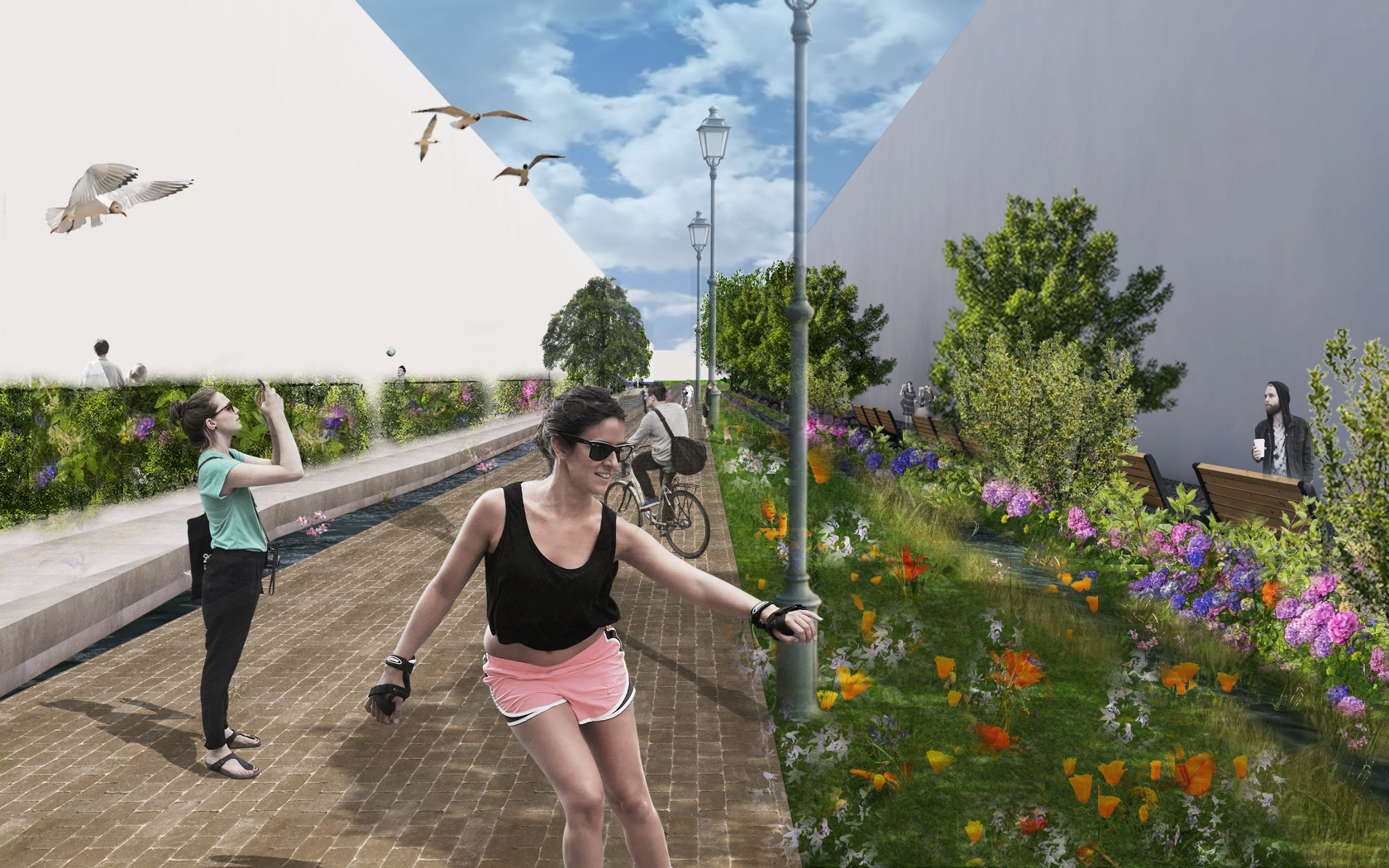Student: Lisanne Viergever
Mentors: Kristel Aalbers, F.D. van Loon
Program: MSc Urbanism
Graduation date: 30-06-2017
Abstract
With climate change changing the world, literally, delta landscapes become more vulnerable. At the same time, delta landscapes become more densely populated every year, creating an uncertain environment for high density urban areas. In the Netherlands, cities are facing treats from the sea level rising, heat stress and increasing amounts of rain fall. The high density combined with the hardening of surfaces in city areas, leaving little open green space with permeable soil, creates problems for cities in times of heavy rain fall. Amsterdam is one of those cities, developing as the biggest metropolitan area of the Netherlands. The city of Amsterdam wants to solve the problems with rain water management, while at the same time developing as a smart, innovative, sustainable metropolitan area. Buiksloterham is a key area in this aspect, functioning as a test ground for sustainable neighborhood development. To create a more sustainable way of water management, the thesis aims for Buiksloterham to become self-sufficient in water use. Storing rain water, re-using rain and grey water and creating high quality water are key factors for achieving this. The design creates 3 separate systems, one for black water which is cleansed by using a living machine. After the black water has been cleansed, it joins the grey water system. This system gathers all the grey water from the households in the neighborhood, circulates this and passes it through helofyte filters for cleansing. Then this water joins the clean water system, a system that is created for a larger part of Amsterdam North. This system is connected to the households, so that the households can re-use the rain water and cleansed grey water to create a circular structure. In order to create more sustainable awareness for the inhabitants of Buiksloterham and make the area function as a sustainable water community, it is important for the inhabitants of Buiksloterham to experience water (visual, audial, touch and smell), to have a say in the way water is managed in the area, to have influence on the way water is managed and to have responsibility over this system. To achieve this, water storage is applied through every scale. On the small scale, changeable objects are added to the public space, integrated with water storage, so that the inhabitants can influence their public space. This creates an ambition in Buiksloterham, that closely connects the inhabitants of the area to the sustainable way of water management. It also creates the possibility for the inhabitants to adjust, add and change the system according to their wishes. The combination of these two aspects, the technical water management part of the societal part which creates a sustainable community, creates an opportunity for both Buiksloterham and Amsterdam, to develop itself as an example of a new way of life, a more connected, interactive urban fabric with the environment and an example of high dense sustainable urban development. key words: water management, rain water management, rain water re-use, sustainable community, sustainable urban fabric, interactive design
Subject
sustainable urban fabric
interactive design
water management
rain water management
rain water re-use
sustainable community




